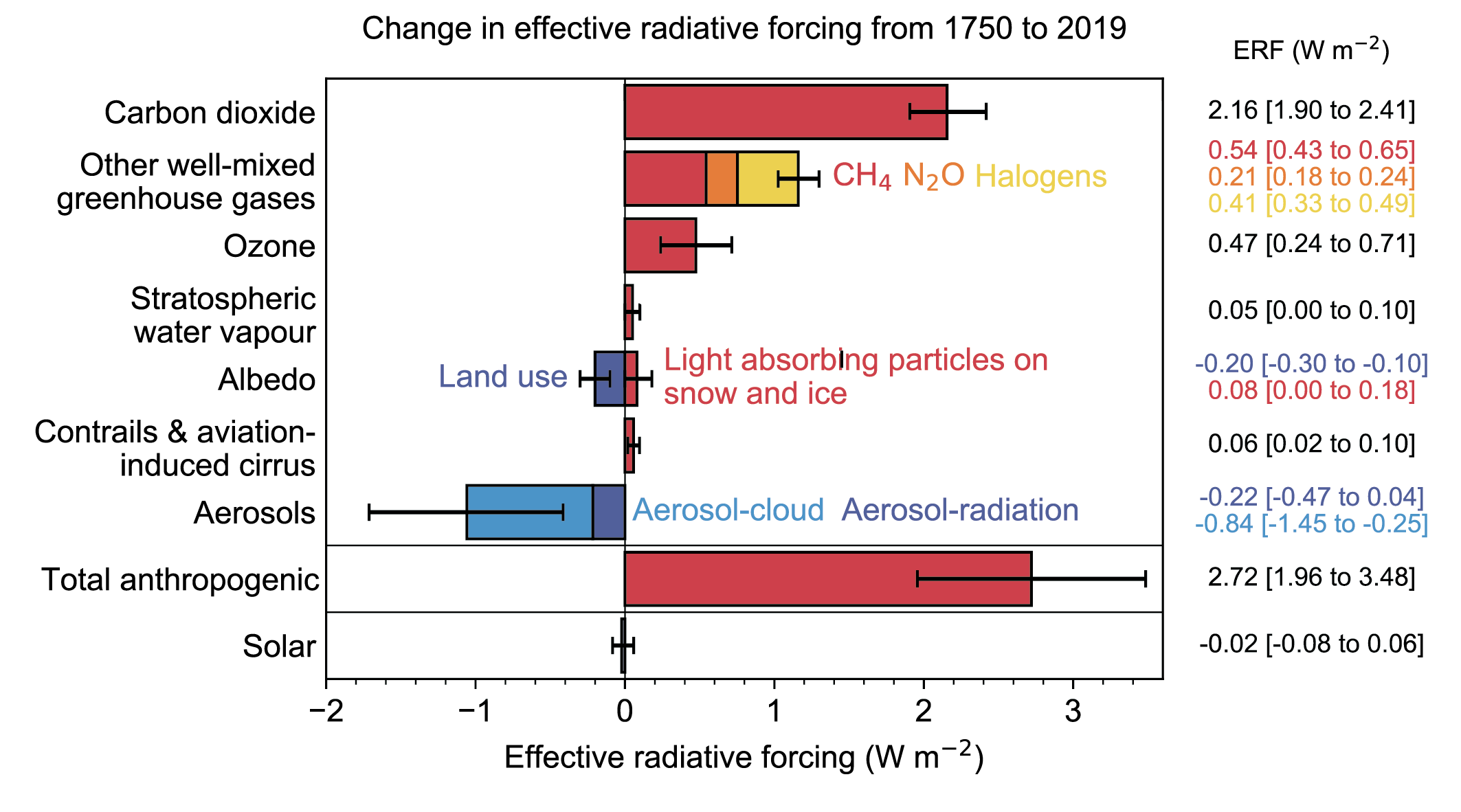Æršo

Slika: ocene za klimatski pritisk različnih antropogenih izpustov; vir: IPCC.
viri:
Szopa, S. et al., Short-Lived Climate Forcers. In Climate Change 2021: The Physical Science Basis. Contribution of Working Group I to the Sixth Assessment Report of the Intergovernmental Panel on Climate Change. Cambridge University Press, Cambridge, United Kingdom and New York, NY, USA, pp. 817–922 (2021) doi: 10.1017/9781009157896.008.
Li, J., Carlson, B.E., Yung, Y.L. et al., Scattering and absorbing aerosols in the climate system. Nat Rev Earth Environ 3, 363–379 (2022). https://doi.org/10.1038/s43017-022-00296-7
James E Hansen et al., Global warming in the pipeline. Oxford Open Climate Change 3, 1 (2023), https://doi.org/10.1093/oxfclm/kgad008
Quaas, J. et al.: Robust evidence for reversal of the trend in aerosol effective climate forcing, Atmos. Chem. Phys. 22, 12221–12239 (2022), https://doi.org/10.5194/acp-22-12221-2022.
Wang, P., Yang, Y., Xue, D. et al. Aerosols overtake greenhouse gases causing a warmer climate and more weather extremes toward carbon neutrality. Nat Commun 14, 7257 (2023). https://doi.org/10.1038/s41467-023-42891-2
naslovna slika: vizualizacija koncentracij aerosolov: črn ogljik (rdeča), prah (vijolična), sol (modra). NASA/Joshua Stevens/Adam Voiland




Dodaj komentar
Komentiraj